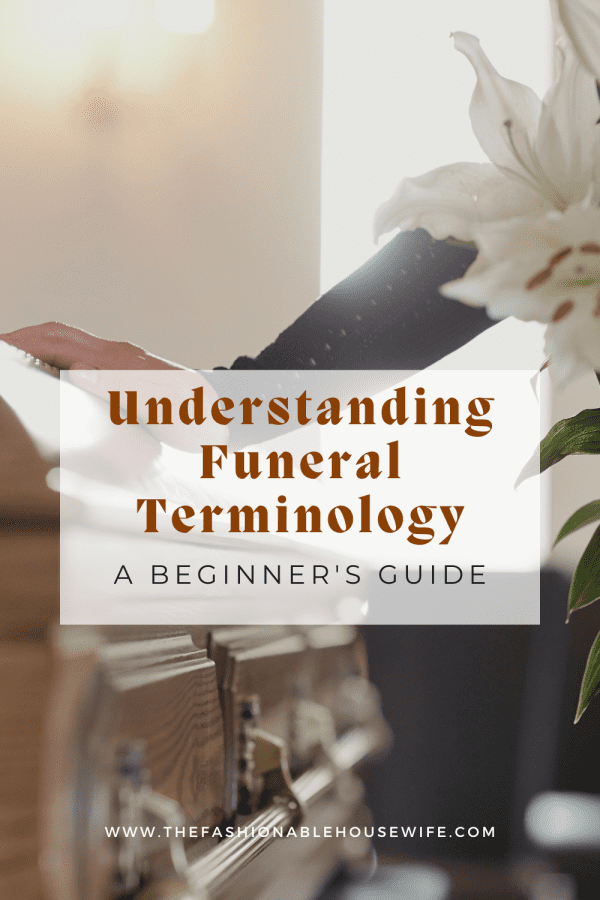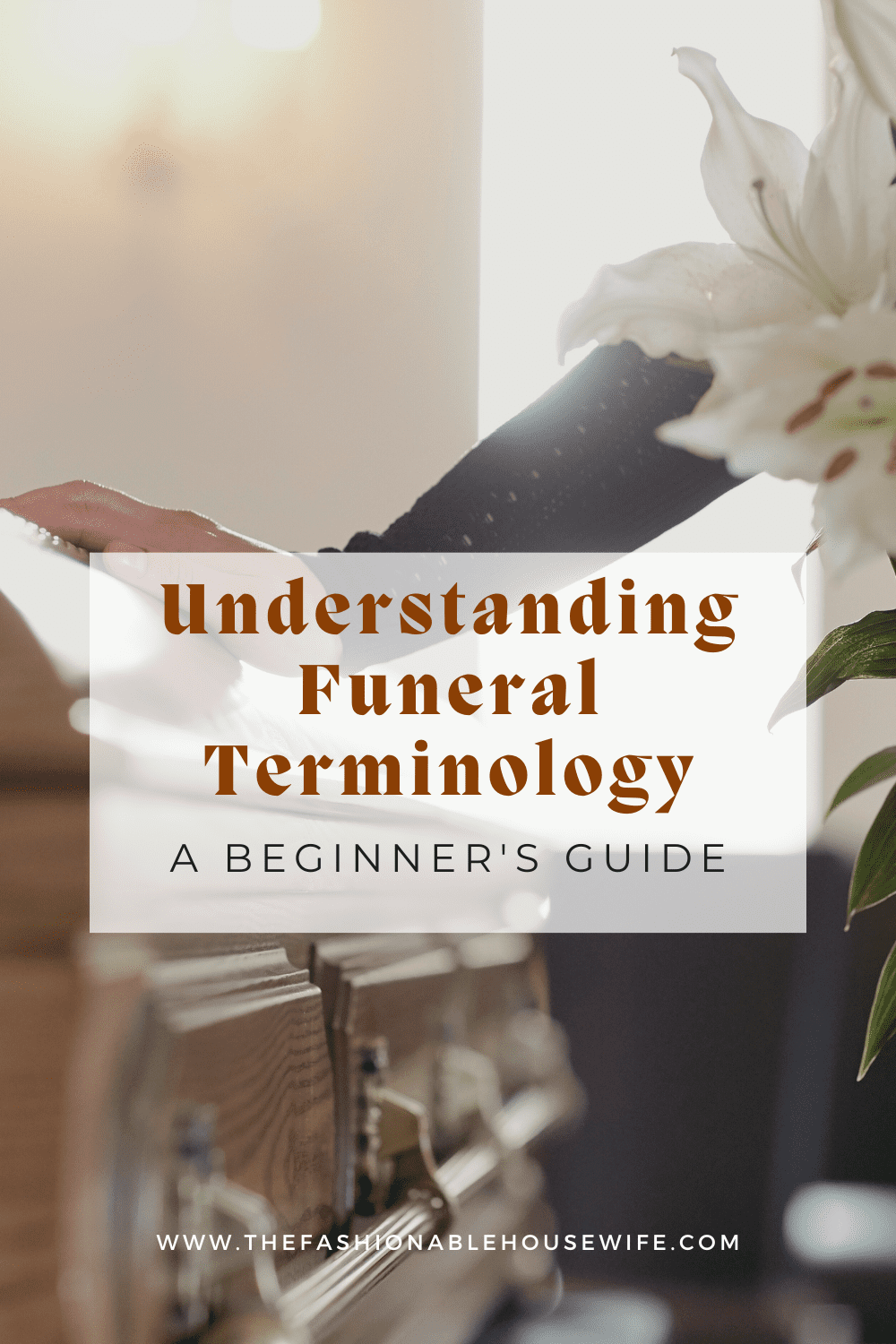Understanding Funeral Terminology: A Beginner’s Guide

Arranging a funeral or just trying to learn about the processes involved can be overwhelming, especially if you’re unfamiliar with the terminology used by funeral professionals. From cremation to memorial services, the language of funerals can seem like an entirely different world.
This guide will walk you through essential funeral terminology clearly and straightforwardly.
1. Funeral
A funeral is a ceremony to pay respect to someone who has died and commemorate the life of a deceased person. It often includes rituals, prayers, or eulogies, depending on cultural or religious traditions. Funerals may involve a viewing of the body, a service in a funeral home, church, or other venue, and sometimes a burial or cremation. While funerals are often seen as solemn occasions, they also serve as an opportunity for friends and family to gather, offer support, and celebrate the life of the deceased.
2. Memorial Service
A memorial service is similar to a funeral. Still, it typically takes place after the body has been buried or cremated. Unlike a funeral, there may not be the presence of the deceased’s body. Memorial services focus on remembering the person’s life through stories, music, speeches, and other commemorative acts. They offer flexibility in timing, allowing family and friends to plan the service at a convenient time after the death.
3. Viewing and Visitation
Viewing or visitation refers to a time when family and friends gather to see the deceased, often in a casket, before the funeral or memorial service. It allows loved ones to say goodbye and provide comfort to one another. A viewing is usually less formal than the funeral service. It can include an open or closed casket, depending on family preference or cultural traditions.
4. Burial
Burial is the process of placing the deceased’s body in the ground, typically in a cemetery plot. Graves are often marked with a headstone or plaque, and burials may include religious or cultural rituals. Cemeteries may offer different types of burial plots, such as single, family, or mausoleum interments.
5. Cremation
Cremation, where the body is turned into ashes by intense heat. Cremation offers flexibility in memorial services since ceremonies can be held before or after the cremation, and families can choose how to store or honor the ashes. Direct cremation services of Virginia Chantilly VA, provides compassionate, professional, and affordable cremation services to help families honor their loved ones with dignity and care.
6. Casket and Coffin
The terms “casket” and “coffin” are often used interchangeably, but they have slight differences. A casket is usually rectangular and designed with a split lid for viewing the body. Coffins are traditionally more tapered, with a broader top and narrower bottom. Both serve the purpose of respectfully housing the deceased for burial or viewing.
7. Urn
An urn is a container used to hold the cremated remains of a loved one. Urns come in various sizes, styles, and materials, such as wood, metal, ceramic, or biodegradable options. Families may choose an urn based on aesthetic preference, size, or symbolic meaning.
8. Pallbearer
Pallbearers are typically close family members or friends and are often chosen as a mark of respect and honor. Some funerals have honorary pallbearers who participate in the ceremony without physically carrying the casket.
9. Eulogy
It often includes personal stories, reflections on the individual’s life, achievements, and character. Eulogies can be delivered by family members, close friends, clergy, or even colleagues, depending on the person’s life and relationships.
10. Obituary
An obituary is a public announcement of a person’s death, typically published in newspapers, online platforms, or funeral home websites. Obituaries often include the deceased’s name, age, date of death, surviving family members, and details about the funeral or memorial service. They serve both as a notice to the community and a tribute to the individual’s life.
11. Interment
Interment refers to the act of placing the body or cremated remains in a final resting place, such as a grave, mausoleum, or columbarium. While burial is one form of interment, cremated remains may also be interred in urn gardens or specialized memorial spaces.
12. Columbarium
A columbarium is a structure with niches to store urns containing cremated remains. Families can choose to place a plaque, photo, or personal memento on or near the niche. Columbaria are often located within cemeteries, religious institutions, or funeral homes.
13. Pre-Need Arrangements
Pre-need arrangements are funeral plans made in advance, often including prepayment for services, selection of casket or urn, and other specific wishes.
14. Grief Support and Counseling
Grief support includes resources and services to help families cope with loss. Many funeral homes offer grief counseling, support groups, or referrals to therapists specializing in bereavement.
15. Death Certificate
A death certificate is an official document that records the death of an individual, including details such as the cause, time, and place of death. Funeral directors often assist families in obtaining death certificates, which are necessary for legal matters, insurance claims, and estate planning.
16. Traditional vs. Modern Funerals
Traditional funerals often involve formal religious or cultural rites, including viewings, burial, and ceremonial gatherings. Modern funerals, on the other hand, may be personalized, with unique themes, outdoor settings, or virtual elements. Understanding these differences helps families decide the type of service that best honors their loved one.
17. Eco-Friendly Options
With growing environmental awareness, many funeral homes now offer green or eco-friendly options, such as biodegradable caskets, urns, and natural burial grounds. These choices minimize ecological impact and may reflect the deceased’s values or beliefs.
18. Funeral Etiquette
Understanding funeral etiquette can help attendees show respect and support. Standard practices include dressing appropriately, arriving on time, offering condolences, participating in rituals, and following family or religious guidelines. Funeral etiquette may vary depending on cultural or regional customs.
Conclusion
Navigating funeral terminology can feel daunting, especially during the emotional time of losing a loved one. From understanding the difference between a funeral and a memorial service to learning about caskets, urns, and pre-need arrangements, knowledge is empowering. Remember, the primary goal of any funeral or memorial service is to honor the life of the deceased and provide a space for loved ones to grieve, remember, and celebrate their legacy.

